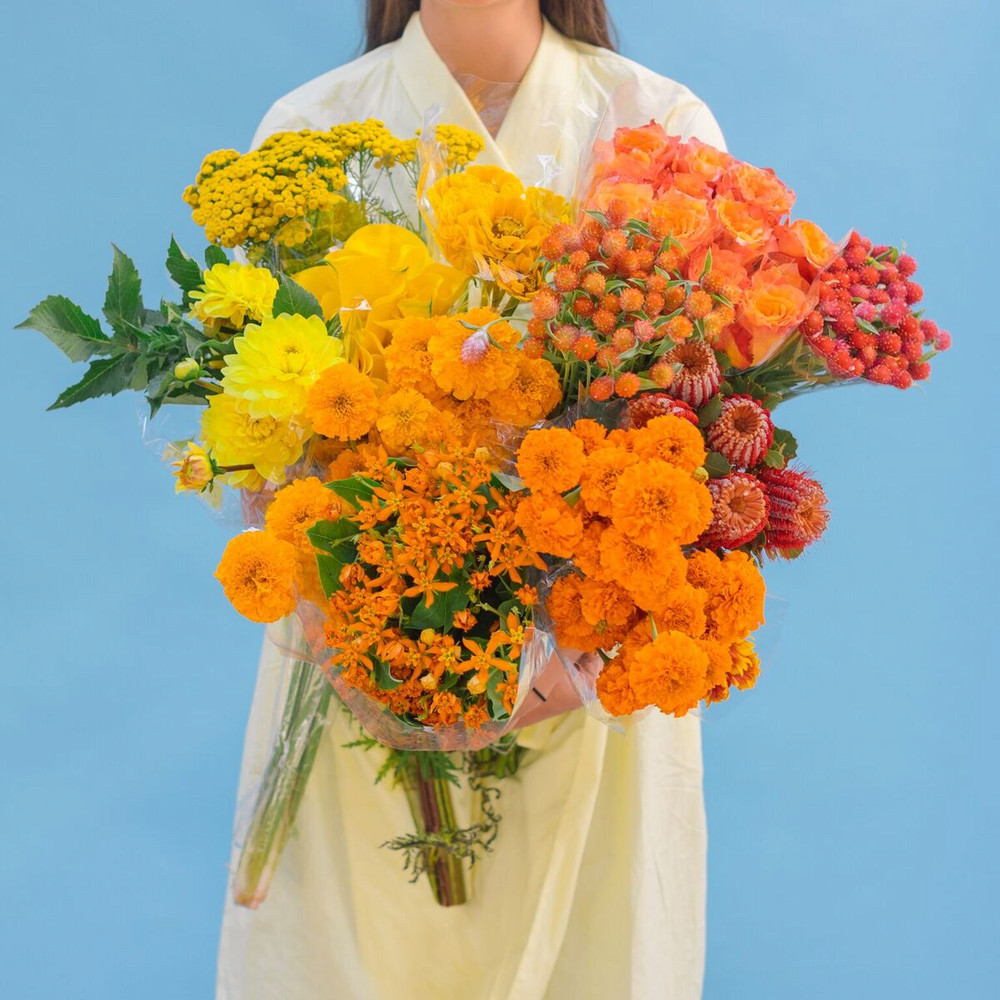We may earn revenue from the products available on this page and participate in affiliate programs.
‘Tis the season for plotting summer travel escapes, revamping your outdoor area (however tiny it may be), and spring cleaning your entire home. ‘Tis also the season for allergies—and, in a slightly more positive light, the source of those allergies. Whether growing in your backyard or in the plant section of your local artisanal shop, also known as Trader Joe’s, floral season is officially in bloom.
And while creating a beautiful floral arrangement adds a lot to your space and gives you temporary bragging rights as an amateur florist, it’s more than a little disheartening when the aforementioned floral arrangement withers and dies in a matter of days. Especially because, depending on where you get them, flowers can be fairly expensive. So what gives?
Turns out, it’s not them. It’s you. There may not be a miracle potion you can give your flowers to help them live forever, but there are precautions to take and tricks to try that can significantly extend their lifespan. We asked some of our favorite floral experts for their hacks to achieving long-lasting florals—here’s what they had to say.

Water, water, water
The overwhelming consensus? The most important thing you can do for your flowers is ensure they’re properly hydrated. “Changing the water and making sure vases are very clean and full of water helps, as they drink so much,” says Domino Style Director Kate Berry. “Bacteria that grows in the water makes them not last as long.”
While tap water will do just fine, opt for cooler water. “Clean vases with fresh water!” says designer Emily Thompson of her number one tip for keeping your flowers going strong. “Mostly just [keep it] clean, and no leaves below the water line.”
Stick to the basics
“I would say that the best [thing you can do] is to refresh the water and recut the stems every day. Basics, but they make a difference!” says Sophia Moreno-Bunge of Isa Isa design studio. The environment matters, too; Moreno-Bunge recommends keeping them in a cooler place and out of direct sunlight. This doesn’t mean your plants should be relegated to a life of darkness, hidden away in some closet; just be strategic with where you display them. “If you must buy real flowers, keep them away from direct light and vents,” advises designer Lewis Miller.
Choose your flowers carefully
Not all flowers were created equally. “Every flower, like any living thing has a different lifespan,” says Thompson. “Mums and carnations have [an] incredibly long vase life; this is why they are so popular with corner stores. Spring favorites, such as peonies, lilac, and lily of the valley, are more fleeting pleasures.”
Figure out exactly what purpose you want your florals to serve. Are you looking for a quick centerpiece you’d be fine with tossing the next day? Choose flowers with a shorter life span. If you want a decorative piece you’ll be able to enjoy for longer, Miller also recommends roses and chrysanthemums, which have a more impressive shelf life than something like hydrangeas or lilac.
Don’t forget to feed them
If you buy your flowers at an actual florist, the bouquet might come with pre-packaged plant food. If you’d rather make your own, try Miller’s at-home recipe: ½ part water to ½ part citrus soda (yes, really) makes for an easy DIY meal. “7Up or Spring, but not diet!” cautions Miller. “The sugar and citric acid are the same components as commercial flower food.”

Each flower is unique
While the basic upkeep (watering, cutting the stems, keeping out of direct sunlight) is the same for most flowers, there are extra steps you can take to customize the care for your blooms—depending on what you have.
For example, Carly Cylinder, floral designer and host of Craftsy’s new series “The Flower Kitchen”, recommends wrapping drooping tulips in brown paper or newspaper and refrigerating them for a few hours so they perk up. “The cold will cause the petals to close up again,” she says.
“Hydrangeas love water! The real trick is that in addition to cutting the stems, you need to run the flower heads under the faucet so they’re well-soaked, or dunk the blooms in a bucket of water and gently shake off the excess water.” This is because hydrangeas drink through their petals—so adding something like spraying them with water on a regular basis to the routine is a simple way to prolong their life. If you’re really committed to flower care, doing a bit of research into the exact needs of your specific florals can go a long way.
When all else fails, think outside the box
Listen, when faced with a dying plant it can’t hurt to turn to more unorthodox solutions. “I love singing Madonna to my flowers,” shares Miller. While there may not be any scientific evidence that crooning “Like a Prayer” into your chrysanthemums will bring them back to life, the idea of talking to your flowers isn’t a new one; just recently, Ikea conducted an experiment in which it concluded that plants receiving a steady stream of verbal compliments lived longer.
That said, if you don’t want to sing or talk to your flowers, Miller has another solution he swears by: Colloidal silver water. “My grandmother mentioned it to me and they triple the length of your flowers. It’s really a magic elixir; like a fountain of youth for your flowers,” he says.
See more floral stories:
The Freshest Flower Trends of 2018 The Plant You Should Buy, Based on Your Zodiac Sign How to Turn Supermarket Flowers into Cool Bouquets
Learn to love your inbox again—sign up for Domino’s daily email.
